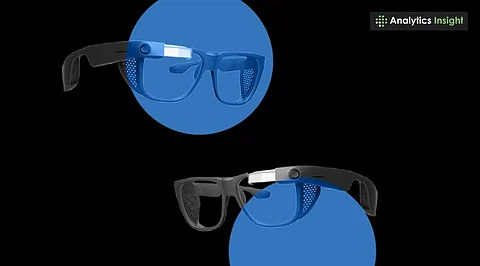

Google Glass 2.0 is coming back with a Gemini AI build and powered by the Android XR platform. This comeback seems to challenge Meta’s Ray-Ban smart glasses directly. Google announced and unveiled the prototype at the Google I/O event in May 2025. This time, Google has joined forces with Samsung, Qualcomm, and Xreal to bring the upcoming smart glasses.
The new-generation features of Google Glass 2.0 include in‑lens display, contextual AI assistance, live translation, and object memory functions. The best part is that all these come with a hands-free method using Gemini as the central intelligence.
It’s not the first time that this tech giant has come up with a smart glass idea. Previously, it came with Google Glass 1.0 that looked like safety glasses used in factories. However, the industrial edition was released in 2017, but because of its limited circulation, the company withdrew it in 2023.
The development of Google Glass 2.0 began in 2021, and at the core of these smart glasses is Gemini. This AI assistant interprets visual and audio inputs to assist users in real time. Demos resemble Gemini, identifying paintings, comparing objects, recommending travel books, and, most importantly, working as a ‘Virtual Memory.’ This ability is the USP that will enable users to recall misplaced objects, documents, or keys. This brilliantly designed feature is something that Meta’s Ray-Ban glasses don’t offer.
Meta’s Ray-Ban glasses, in contrast, offer open-ear audio, a camera, and basic voice commands using Meta AI. However, despite massive success, these smart glasses lack in‑lens HUD, advanced visual translation, or virtual memory that Google’s Gemini integration promises to bring.
Also Read: Ray-Ban Meta AI Smart Glasses Launched in India via Titan Eye+: Features Unveiled
Meta Glasses were initially released in late 2023, and already these smart glasses have sold more than 2 million units. Now that Google is coming with its AI-powered glasses, the question remains whether this tech giant will be able to combine AI utility, fashion appeal, and affordability successfully to compete with Meta.
Meta plans to release next‑gen glasses, reportedly Ray-Ban Meta 3, with a wristband for navigation and interaction, which signifies smarter AI integration. On the contrary, Google is relying on voice and visual control via Gemini and offering partnerships for stylish frames and wrist accessories.
Meta’s smartglass designs are already established in the industry with its EssilorLuxottica partnership. Therefore, Google’s entry must prove itself both technically and aesthetically to match Meta’s momentum.
In the world of smart glasses, Google 2.0 may represent a meaningful evolution. Learning from the past mistakes, Google has addressed battery, privacy, usability, and style concerns that were responsible for the failure of the original Glass. However, the highlight is still the Gemini integration, fashion partnerships, and modular Android XR ecosystem. These indicate ambition. With a competitive price range, Google has a considerable chance to capture the market.
Meta still benefits from its market presence. It has already sold millions of units and is known for its brand identity. Therefore, if Google 2.0 really wants to challenge Meta, the company has to deliver a seamless, stylish product that justifies everyday wear and demonstrable utility. The promise is high; if Google delivers on its promises, Glass 2.0 may reshape the smart-glass landscape.
